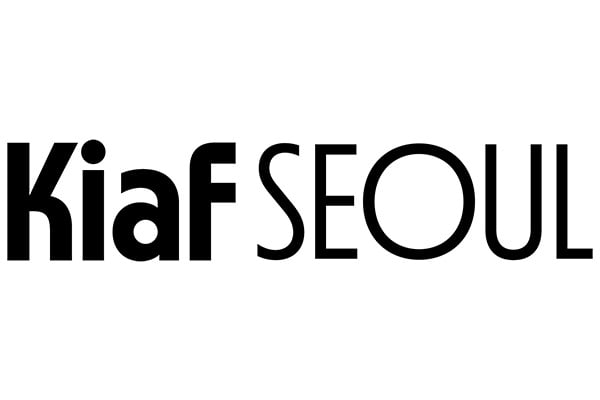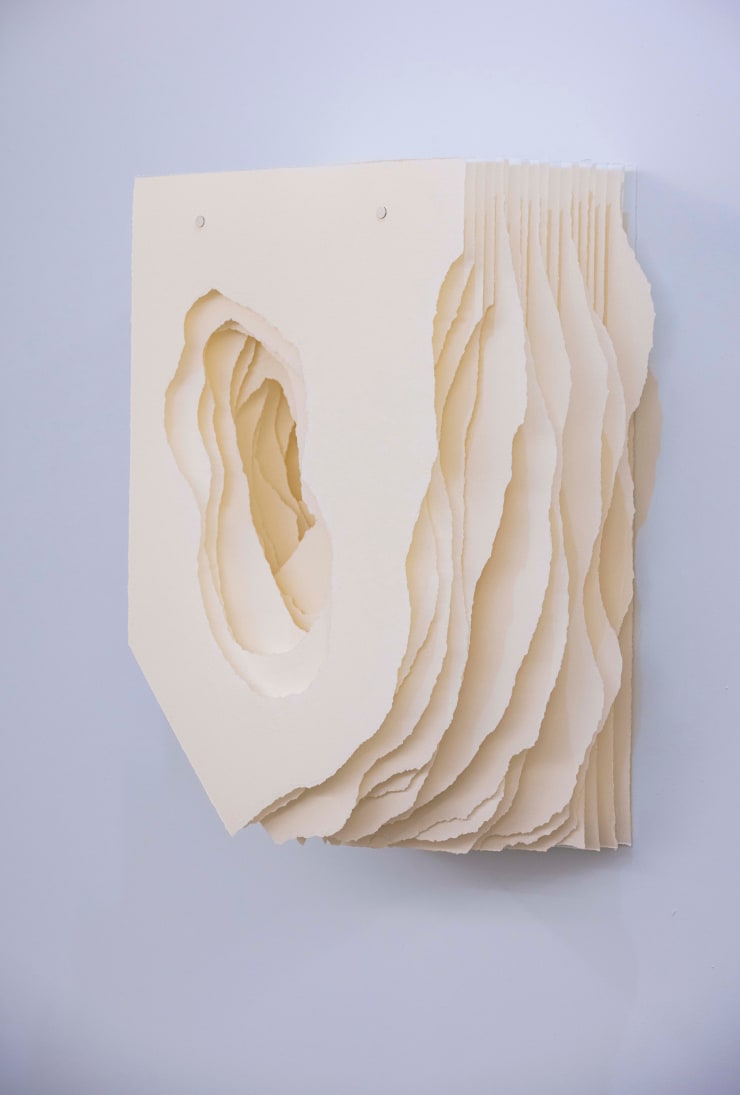Angela Glajcar German, b. 1970
Cover
Biography
Angela Glajcar makes sculpture from paper. Under her hands this humble and familiar material is torn, bent and folded into spatially-sophisticated structures, which echo the monumental contours of landscape. These pieces are suggestive of the geological formations made by the Earth's elemental processes. Here we see evocations of the undulations of land, the erosions of river delta and the carving out of cave, pit and valley.
An award-winning artist, Glajcar was educated at Der Akademie der Bildenden Künste in Nuremberg Germany. Initially working with wood and metal, she turned to paper as her chosen medium. She stated in an interview that it "completely changed my way of working as an artist." She found its formal properties profoundly exciting and full of possibilities, especially its ability to enclose and define space. The physical properties of paper allow for a lightness and dexterity in handling. At the same time, it is surprisingly tough and robust. Its curved and formed planes are very effective at making expansive enclosures and definitions of boundaries, something that can be seen particularly in Glajcar's site-specific interventions.
The material naturally lends itself to layering and lamination. The sheet is the basic module of production and the tear, the action. The dialogue between the two generates a multiplicity and variety of forms. An important property of paper is its translucency and reflectiveness, something which the sculptor exploits to the full. Light dances across the surfaces of these sculptures; it shines and glows through certain components and refracts off others. In some pieces it seems to emanate from the object itself.
Glajcar's process is transformative. She responds to her raw material and understands its light and fragile nature. She spins a compelling and allusive world out of her subtle manipulations of an everyday essential, paper.
Works
-
 Terforation 2023-018, 2023Paper 200g, torn, metal and plastic holder58 x 38 x 24 cm
Terforation 2023-018, 2023Paper 200g, torn, metal and plastic holder58 x 38 x 24 cm
22.8 x 15 x 9.5 in -
 Terforation 2023-019, 2023Paper 200g, torn, metal and plastic holder58 x 38 x 24 cm
Terforation 2023-019, 2023Paper 200g, torn, metal and plastic holder58 x 38 x 24 cm
22.8 x 15 x 9.5 in -
 Terforation 2023-020, 2023Paper 200g, torn, metal and plastic holder58 x 43 x 24 cm
Terforation 2023-020, 2023Paper 200g, torn, metal and plastic holder58 x 43 x 24 cm
22.8 x 17 x 9.5 in -
 Terforation 2023-021, 2023Paper 200g, torn, metal and plastic holder65 x 38 x 24 cm
Terforation 2023-021, 2023Paper 200g, torn, metal and plastic holder65 x 38 x 24 cm
25.6 x 15 x 9.5 in -
 Scale Matters 2022-052, 2022Paper 350g, torn, metal holder and
Scale Matters 2022-052, 2022Paper 350g, torn, metal holder and
plastic33 x 70 x 52 cm
13 x 27.7 x 20.5 in
Enquire
Send me more information on Angela Glajcar
Exhibitions
Art Fairs
-

Kiaf SEOUL 2024
4 - 8 Sep 2024Kiaf SEOUL is South Korea's first international art fair which opened in 2002. With the rapid growth of Seoul as a global art city, Kiaf...Read more -

EXPO CHICAGO 2023
13 - 16 Apr 2023This spring Pontone Gallery exhibits at the prestigious Expo Chicago art fair. The gallery showcases a selection of its international artists, who range across the...Read more






